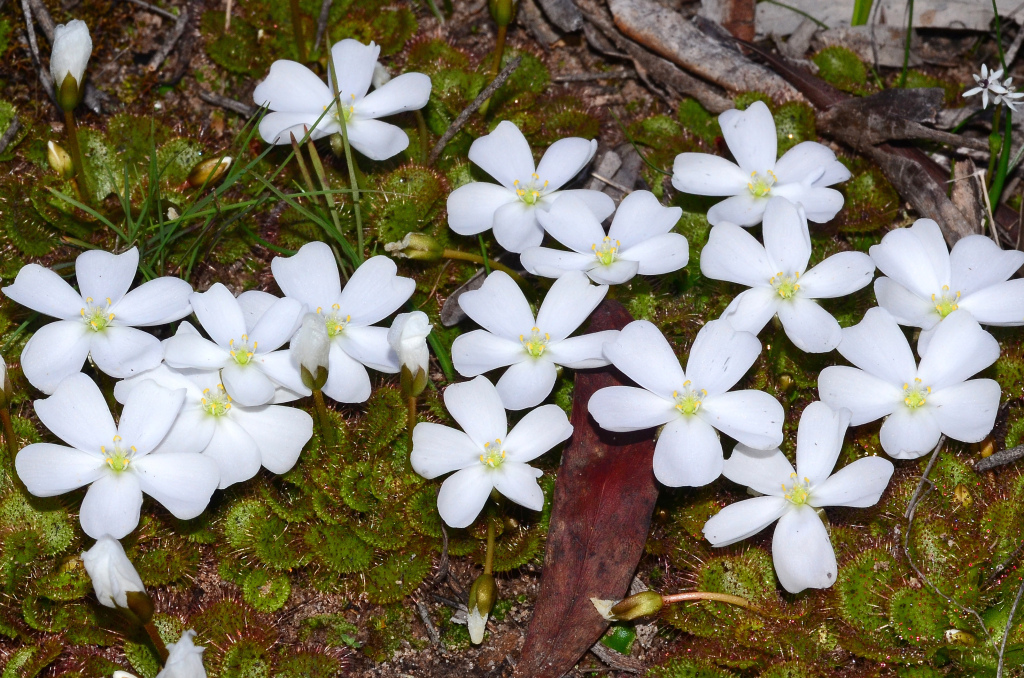Drosera
Terrestrial, mostly perennial herbs. Stems often reduced. Leaves spiral, simple, often in a basal rosette, glandular hairs present; stipules often multilobed or absent. Inflorescence simple, sometimes branched, mostly bracteate. Flowers white, orange, pink, red or purple; calyx with inner surface glabrous; corolla more or less imbricate, veined; petals obovate to obovate-spathulate (after anthesis the petals tend to stick together with anthers and stigmas to form a hood over the ovary and capsule); styles free. Seeds ellipsoid or fusiform, black.
About 245 species distributed discontinuously throughout the world. The greatest diversity occurs in Australia, (c. 170 species), where pygmy Drosera (D. section Bryastrum; c. 59 species) and tuberous Drosera (D. subgenus Ergaleium; c. 71 species) comprise the majority of species.
Conn, B.J. (1996). Droseraceae. In: Walsh, N.G.; Entwisle, T.J., Flora of Victoria Vol. 3, Dicotyledons Winteraceae to Myrtaceae, pp. 356–361. Inkata Press, Melbourne.
 Spinning
SpinningLowrie, A.; Nunn, R.; Robinson, A.; Bourke, G.; McPherson, S.; Fleischmann, A. (2017). Drosera of the World . Redfern Natural History Productions , Poole, Dorset, England .




